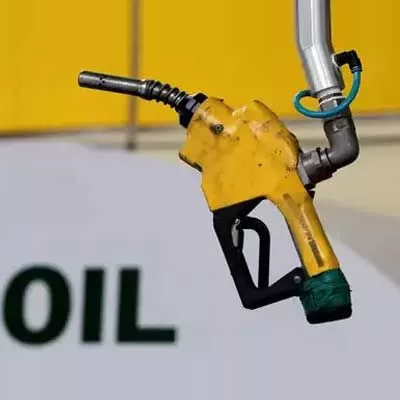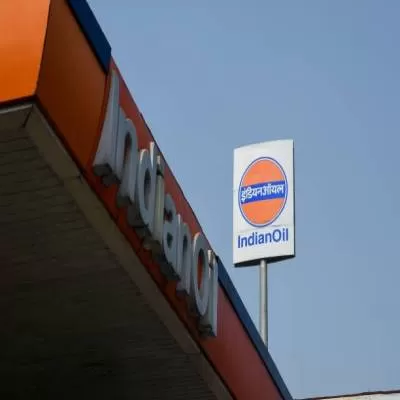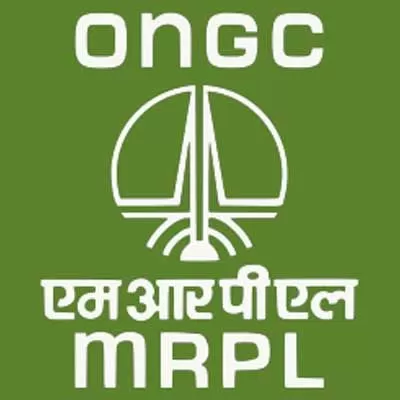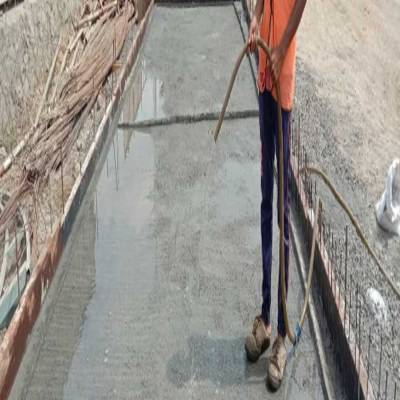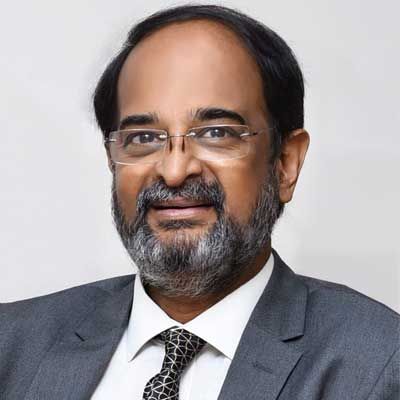- Home
- Infrastructure Energy
- OIL & GAS
- His Wide Canvas
His Wide Canvas
"The widest canvas of human engineering that makes a real difference to people’s lives is civil engineering.” With that statement, Deepak Moudgil, Director (Projects), Engineers India Ltd (EIL), eloquently explains his choice of career, one that spanned nearly four decades. After an initial short stint with the Public Works Department, Punjab, Moudgil has been with EIL all the way, handling projects across every sector, from cross-country multi-product and gas pipelines, refineries, petrochemicals and fertilisers to airports, highways, bridges, technology parks, urban development, high-rise complexes and water/sewage management. In fact, of the total 16,000 km of pipelines executed by EIL to date, 6,500 km have been handled under his leadership in a short span of three years. Also, a director on the Board of Certification of Engineers International Ltd (an EIL subsidiary), the 58-year-old has held several positions at EIL covering the entire management gamut. And, over the years, he has worked to provide sustainable end-to-end engineering solutions to customers with the help of a professional and dedicated team.
Currently, as director of the Project Division, his mandate includes overseeing consultancy services, execution of turn-key projects and providing overall guidance for the continuous upgrade of the technical skills of employees. As for projects too, he has enough on his plate in various stages of execution: around 4,000 km of cross-country pipelines costing Rs 11,000 crore; urban infrastructure projects; water and waste management; green buildings and Commonwealth Games infrastructure costing Rs 35,000 crore. Particularly close to his heart, though, is the infrastructure division, which he was instrumental in creating in order that the company could increase capacity and handle larger projects.
In turn, booming infrastructure will create great demand for civil engineers, Moudgil emphasises. “According to government estimates, overall engineering employment is expected to grow by 11 per cent between 2008 and 2018,” he points out. But, to meet this rising demand, several stumbling blocks will have to be overcome, as he tells CW...
Impediments to growth: The major factor affecting growth in civil engineering is lack of interest in this stream, resulting in dearth of good engineers. Both educational institutions and industry professionals have to ponder over this. We need an effective curriculum in engineering colleges, and the industry should fulfil the growing demands of engineers.
What it takes: A successful engineer should have good knowledge and clarity on concept and design plans. He should be result-oriented with good leadership qualities, communication skills and commitment towards work. He must be prepared to put in long hours. The bottom line should be completing the project successfully within approved costs, the agreed time schedule and with the desired quality.
Home vs. abroad: EIL has worked on oil and gas sector projects in the Middle East and other countries. The major difference between working in India and outside is that the approvals here are accorded by multiple authorities, whereas outside it is generally done by a multidisciplinary authority, which results in faster approvals and timely completion of projects. Also, there is greater responsibility to ensure quality and safety in other countries.
Quality issues: Weak governance, unreasonable targets and timelines, least cost competition, lack of leadership, quality of personnel deployed for the project, and lack of skilled workers are reasons that affect the quality of any project.
Trendy technology: India is rapidly adapting to the latest engineering and construction techniques prevalent in other countries in most sectors. Value addition in equipment and advancement in materials and technology are considerable. For instance, the installation of pile foundations with hydraulic rigs, slip forming, off-site fabrication and assembly, and re-visiting various seismic zones in IS 456 to build more earthquake-resistant structures are some major advances. Intelligent buildings, green buildings, modern airports, metro and mono rail systems, use of CAD and 3D model for design, and use of computerised systems for construction applications are all examples of technological advances in the Indian construction sector. But, we lag behind in the maintenance of roads, sewerage and drainage systems, where we do not use the latest methods.
Evolving equipment: The construction equipment sector is now at an intermediate stage of development, with the industry bringing in international technology to cope with the increasing scale of operation. International technology leaders are present either in JVs, or with their own manufacturing or marketing facilities. Products for both premium equipment and value-for-money are now available here. While heavy equipment like cranes, conveyors and earthmovers are getting advanced, India is also witnessing the entry of new, sophisticated equipment like laser-guided survey and excavation equipment, and tunnelling equipment.
Material makeover: The method of preparing concrete in batching plants and transporting it to site has evolved. Changes have taken place even in the use of cement, with PPC being given precedence over conventional OPC with an eye on the use of flyash generated by thermal power plants. Flyash bricks and autoclaved aerated concrete blocks, using stone crusher sand as fine aggregates, are now extensively used. Reinforcement bars have also been upgraded from conventional Fe 415 grades to Fe 500, Fe 500D, etc, to enhance the strength of concrete structures. More eco-friendly products are being used today, including paints with less toxic components, and the use of glass of suitable grades for natural lighting in high rises is another improvement.
Track record: Deepak Moudgil
Education: Civil engineering graduate from University of Punjab (1974)
Career:
• 1974-75: Project Manager, Public Works Department (B&R), Punjab
• 1975 to date: Engineers India Ltd. Joined as Assistant Engineer and became Project/Construction Manager in 1980.
Thereafter, held several managerial positions and became Executive Director (Projects) in 2008 and Director (Projects) in 2011
• Member, Panel of Arbitrators, New Delhi Municipal Council
• Representing EIL on sectional committees of Bureau of Indian Standards
• Member, Institution of Engineers
Accolades
• Best Employee of the Year Award from EIL (in 2000)
• Memento from the President of India for providing excellent project and construction management services for the construction of the Indian National Science Academy Complex, Delhi (in 1997)
• Letter of Appreciation from EIL for commissioning a 2,000-line EPABX in an operational building within two months with zero downtime (in 1998)
Challenging projects
Project:Guru Gobind Singh Refinery, Bathinda, Punjab
Period: 2008-2012
Cost : Rs 21,000 crore ($4 billion)
Client : HPCL-Mittal Energy Ltd (a JV between Hindustan Petroleum Corporation and Mittal Energy Investment Pvt Ltd, Singapore)
Project management consultant: Engineers India Ltd (from concept to commissioning)
Major contractors: L&T, Petron, Bridge & Roof
Background: Built on PPP, this 9 mt grassroots refinery was commissioned in March 2012. It consists of a single point mooring and crude oil terminal (COT) in Mundra, a 1,017 km cross-country pipeline from Mundra to Bathinda, a captive 165 MW power plant and secondary process units.
Challenges: This was a massive project – the largest refinery EIL had undertaken – and coordination and implementation involving several contractors and a large workforce was challenging. A special multidisciplinary taskforce planned everything meticulously and executed it in record time. Bringing all the consignments, including the imported ones, from Mumbai and other places to Bathinda was another challenge; the most demanding was the transportation of heavy reactors from Hazira to Bathinda. It involved minute detailing, obtaining permission from various authorities, modifying overhead lines, bypasses and building temporary bridges across water bodies.
Some milestones:
• Commissioning started within 45 months
• Transportation of three heavy reactors (about 650-850 tonne each) from Hazira to Bathinda achieved in a record time of 110 days, traversing about 1,400 km and crossing around 132 water bodies
• 1,800 cu m of RCC done in a single pour, in 30 hours, with seven batching plants and 30 transit mixers; peak RCC productivity of 1,000 cu m per day
• Peak workforce at site was around 30,000.
Project: Expansion-cum-upgrade of Mangalore Refinery & Petrochemicals Ltd (MRPL)
Period: 2008-2012
Cost: About Rs 12,000 crore
Client: Mangalore Refinery & Petrochemicals Ltd (MRPL)
Project management consultant: Engineers India Ltd
Major contractors: EIL, L&T, Tecnimont, Toyo, Punj Lloyd
Background: With a nameplate capacity of 9.69 mmtpa, MRPL had processed close to 12 mmtpa of crude with
its Phase I and II units. In Phase III, MRPL upgraded the refinery to meet Euro-III/IV specifications for its entire diesel pool, and increased crude processing capacity to 15 mmtpa by adding crude and vacuum distillation units of 3 mmtpa capacity.
Challenges: Several impediments cropped up during the construction phase like the enormous site grading and unexpected hard rock in patches. As work was going on close to the operating refinery, workers had to engage in control blasting, crack the rocks and then lift them with dumpers. Other challenges included retaining the Benkinatheshwar temple on the site by building a separate boundary wall and access road, dealing with protests by displaced families demanding higher compensation and heavy rains. By engaging more contractors and working extended hours, along with the efforts of the EIL/MRPL team of engineers and support of the management, the delay was reduced considerably.
To share your engineering experiences with us, write in at feedback@ASAPPmedia.com
In this series of tête-à-tête with prominent civil engineers, Janaki Krishnamoorthi speaks to Deepak Moudgil, Director (Projects), Engineers India Ltd, and member of the company’s Board of Directors.The widest canvas of human engineering that makes a real difference to people’s lives is civil engineering.” With that statement, Deepak Moudgil, Director (Projects), Engineers India Ltd (EIL), eloquently explains his choice of career, one that spanned nearly four decades. After an initial short stint with the Public Works Department, Punjab, Moudgil has been with EIL all the way, handling projects across every sector, from cross-country multi-product and gas pipelines, refineries, petrochemicals and fertilisers to airports, highways, bridges, technology parks, urban development, high-rise complexes and water/sewage management. In fact, of the total 16,000 km of pipelines executed by EIL to date, 6,500 km have been handled under his leadership in a short span of three years. Also, a director on the Board of Certification of Engineers International Ltd (an EIL subsidiary), the 58-year-old has held several positions at EIL covering the entire management gamut. And, over the years, he has worked to provide sustainable end-to-end engineering solutions to customers with the help of a professional and dedicated team.Currently, as director of the Project Division, his mandate includes overseeing consultancy services, execution of turn-key projects and providing overall guidance for the continuous upgrade of the technical skills of employees. As for projects too, he has enough on his plate in various stages of execution: around 4,000 km of cross-country pipelines costing Rs 11,000 crore; urban infrastructure projects; water and waste management; green buildings and Commonwealth Games infrastructure costing Rs 35,000 crore. Particularly close to his heart, though, is the infrastructure division, which he was instrumental in creating in order that the company could increase capacity and handle larger projects.In turn, booming infrastructure will create great demand for civil engineers, Moudgil emphasises. “According to government estimates, overall engineering employment is expected to grow by 11 per cent between 2008 and 2018,” he points out. But, to meet this rising demand, several stumbling blocks will have to be overcome, as he tells CW...Impediments to growth: The major factor affecting growth in civil engineering is lack of interest in this stream, resulting in dearth of good engineers. Both educational institutions and industry professionals have to ponder over this. We need an effective curriculum in engineering colleges, and the industry should fulfil the growing demands of engineers.What it takes: A successful engineer should have good knowledge and clarity on concept and design plans. He should be result-oriented with good leadership qualities, communication skills and commitment towards work. He must be prepared to put in long hours. The bottom line should be completing the project successfully within approved costs, the agreed time schedule and with the desired quality.Home vs. abroad: EIL has worked on oil and gas sector projects in the Middle East and other countries. The major difference between working in India and outside is that the approvals here are accorded by multiple authorities, whereas outside it is generally done by a multidisciplinary authority, which results in faster approvals and timely completion of projects. Also, there is greater responsibility to ensure quality and safety in other countries.Quality issues: Weak governance, unreasonable targets and timelines, least cost competition, lack of leadership, quality of personnel deployed for the project, and lack of skilled workers are reasons that affect the quality of any project.Trendy technology: India is rapidly adapting to the latest engineering and construction techniques prevalent in other countries in most sectors. Value addition in equipment and advancement in materials and technology are considerable. For instance, the installation of pile foundations with hydraulic rigs, slip forming, off-site fabrication and assembly, and re-visiting various seismic zones in IS 456 to build more earthquake-resistant structures are some major advances. Intelligent buildings, green buildings, modern airports, metro and mono rail systems, use of CAD and 3D model for design, and use of computerised systems for construction applications are all examples of technological advances in the Indian construction sector. But, we lag behind in the maintenance of roads, sewerage and drainage systems, where we do not use the latest methods.Evolving equipment: The construction equipment sector is now at an intermediate stage of development, with the industry bringing in international technology to cope with the increasing scale of operation. International technology leaders are present either in JVs, or with their own manufacturing or marketing facilities. Products for both premium equipment and value-for-money are now available here. While heavy equipment like cranes, conveyors and earthmovers are getting advanced, India is also witnessing the entry of new, sophisticated equipment like laser-guided survey and excavation equipment, and tunnelling equipment.Material makeover: The method of preparing concrete in batching plants and transporting it to site has evolved. Changes have taken place even in the use of cement, with PPC being given precedence over conventional OPC with an eye on the use of flyash generated by thermal power plants. Flyash bricks and autoclaved aerated concrete blocks, using stone crusher sand as fine aggregates, are now extensively used. Reinforcement bars have also been upgraded from conventional Fe 415 grades to Fe 500, Fe 500D, etc, to enhance the strength of concrete structures. More eco-friendly products are being used today, including paints with less toxic components, and the use of glass of suitable grades for natural lighting in high rises is another improvement.Track record: Deepak MoudgilEducation: Civil engineering graduate from University of Punjab (1974)Career:• 1974-75: Project Manager, Public Works Department (B&R), Punjab • 1975 to date: Engineers India Ltd. Joined as Assistant Engineer and became Project/Construction Manager in 1980.Thereafter, held several managerial positions and became Executive Director (Projects) in 2008 and Director (Projects) in 2011 • Member, Panel of Arbitrators, New Delhi Municipal Council• Representing EIL on sectional committees of Bureau of Indian Standards • Member, Institution of EngineersAccolades• Best Employee of the Year Award from EIL (in 2000)• Memento from the President of India for providing excellent project and construction management services for the construction of the Indian National Science Academy Complex, Delhi (in 1997) • Letter of Appreciation from EIL for commissioning a 2,000-line EPABX in an operational building within two months with zero downtime (in 1998)Challenging projectsProject:Guru Gobind Singh Refinery, Bathinda, PunjabPeriod: 2008-2012 Cost : Rs 21,000 crore ($4 billion) Client : HPCL-Mittal Energy Ltd (a JV between Hindustan Petroleum Corporation and Mittal Energy Investment Pvt Ltd, Singapore)Project management consultant: Engineers India Ltd (from concept to commissioning)Major contractors: L&T, Petron, Bridge & RoofBackground: Built on PPP, this 9 mt grassroots refinery was commissioned in March 2012. It consists of a single point mooring and crude oil terminal (COT) in Mundra, a 1,017 km cross-country pipeline from Mundra to Bathinda, a captive 165 MW power plant and secondary process units.Challenges: This was a massive project – the largest refinery EIL had undertaken – and coordination and implementation involving several contractors and a large workforce was challenging. A special multidisciplinary taskforce planned everything meticulously and executed it in record time. Bringing all the consignments, including the imported ones, from Mumbai and other places to Bathinda was another challenge; the most demanding was the transportation of heavy reactors from Hazira to Bathinda. It involved minute detailing, obtaining permission from various authorities, modifying overhead lines, bypasses and building temporary bridges across water bodies.Some milestones: • Commissioning started within 45 months • Transportation of three heavy reactors (about 650-850 tonne each) from Hazira to Bathinda achieved in a record time of 110 days, traversing about 1,400 km and crossing around 132 water bodies• 1,800 cu m of RCC done in a single pour, in 30 hours, with seven batching plants and 30 transit mixers; peak RCC productivity of 1,000 cu m per day • Peak workforce at site was around 30,000.Project: Expansion-cum-upgrade of Mangalore Refinery & Petrochemicals Ltd (MRPL) Period: 2008-2012 Cost: About Rs 12,000 crore Client: Mangalore Refinery & Petrochemicals Ltd (MRPL) Project management consultant: Engineers India LtdMajor contractors: EIL, L&T, Tecnimont, Toyo, Punj LloydBackground: With a nameplate capacity of 9.69 mmtpa, MRPL had processed close to 12 mmtpa of crude with its Phase I and II units. In Phase III, MRPL upgraded the refinery to meet Euro-III/IV specifications for its entire diesel pool, and increased crude processing capacity to 15 mmtpa by adding crude and vacuum distillation units of 3 mmtpa capacity.Challenges: Several impediments cropped up during the construction phase like the enormous site grading and unexpected hard rock in patches. As work was going on close to the operating refinery, workers had to engage in control blasting, crack the rocks and then lift them with dumpers. Other challenges included retaining the Benkinatheshwar temple on the site by building a separate boundary wall and access road, dealing with protests by displaced families demanding higher compensation and heavy rains. By engaging more contractors and working extended hours, along with the efforts of the EIL/MRPL team of engineers and support of the management, the delay was reduced considerably.To share your engineering experiences with us, write in at feedback@ASAPPmedia.com


